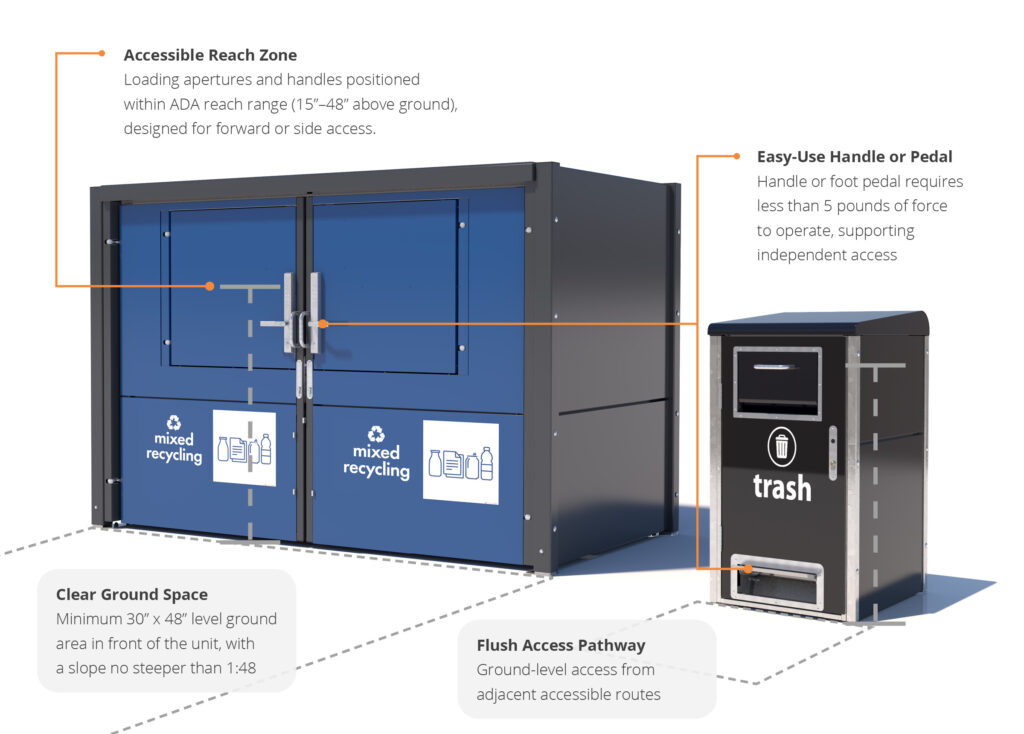
ADA Compliance
More than 1 in 4 adults in the United States have some type of disability.
The Americans with Disabilities Act (ADA) is a civil rights law that aims to eliminate discrimination against individuals with disabilities. The ADA aims to ensure that everyone, regardless of their abilities, can fully participate in societal activities without facing physical barriers. Achieving this inclusivity often requires addressing architectural barriers that could impede access.
General ADA guidelines can help determine the appropriate height requirements and placement for accessible waste management.
Ground Space:
Reach:
ADA guidelines define both forward and side reach requirements for accessible elements:
These measurements help ensure that receptacles are accessible to individuals using mobility aids.

metroSTOR designs waste and recycling units to support reasonable provision for accessibility, in line with ADA Standards. While full universal provision is challenged by the current size and shape of industry-standard carts and dumpsters, we work to minimise these barriers through inclusive design. This includes:
We are committed to continuing our work towards universal accessibility, actively exploring product innovations that improve ease of use and compliance across a wider range of installations.
